From the casebooks of the most notorious astrologer doctors in all England
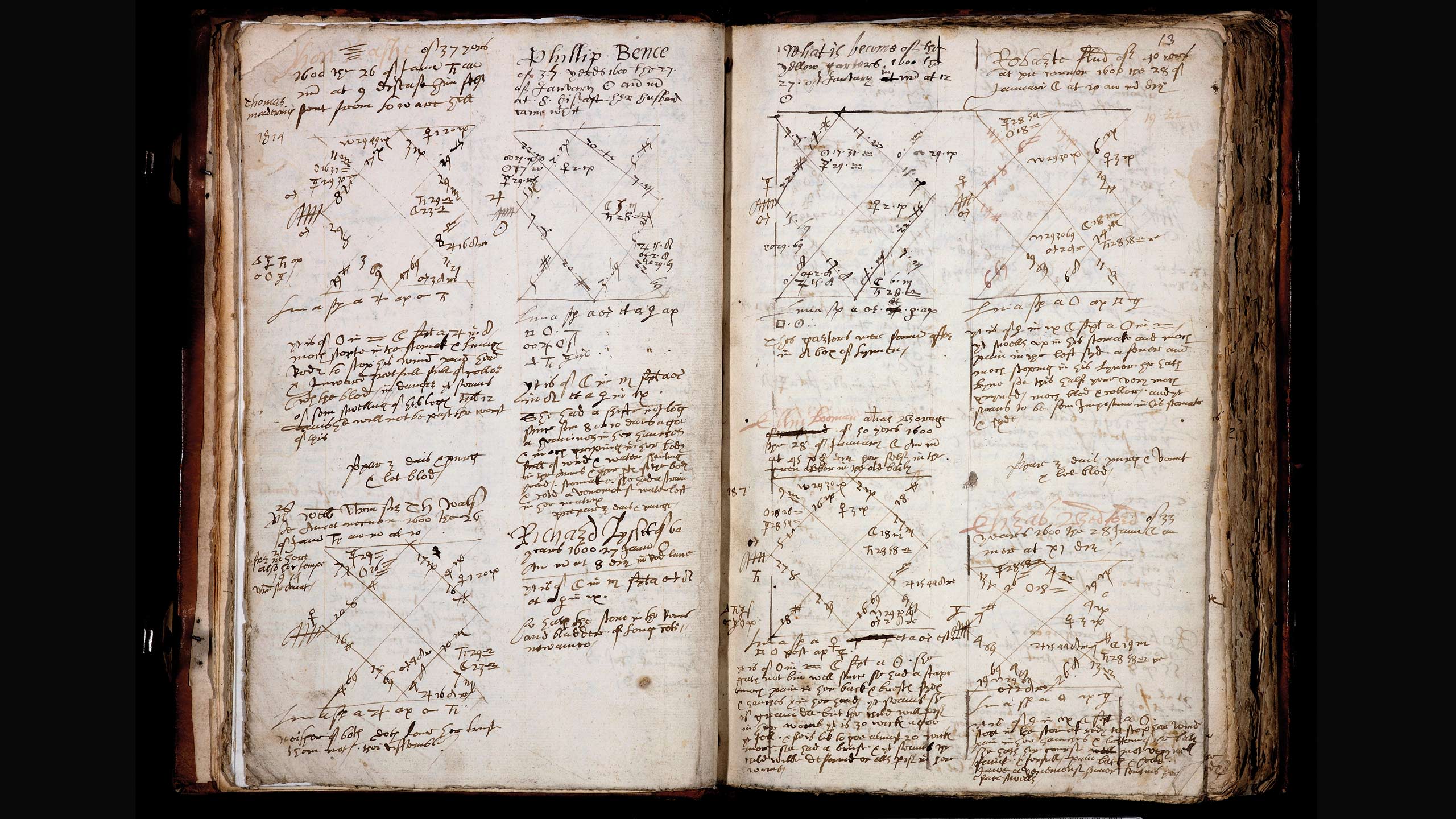
A ten-year project to study and digitise some 80,000 cases recorded by two famous astrological physicians has opened a “wormhole” into the worries and desires of people who lived 400 years ago.
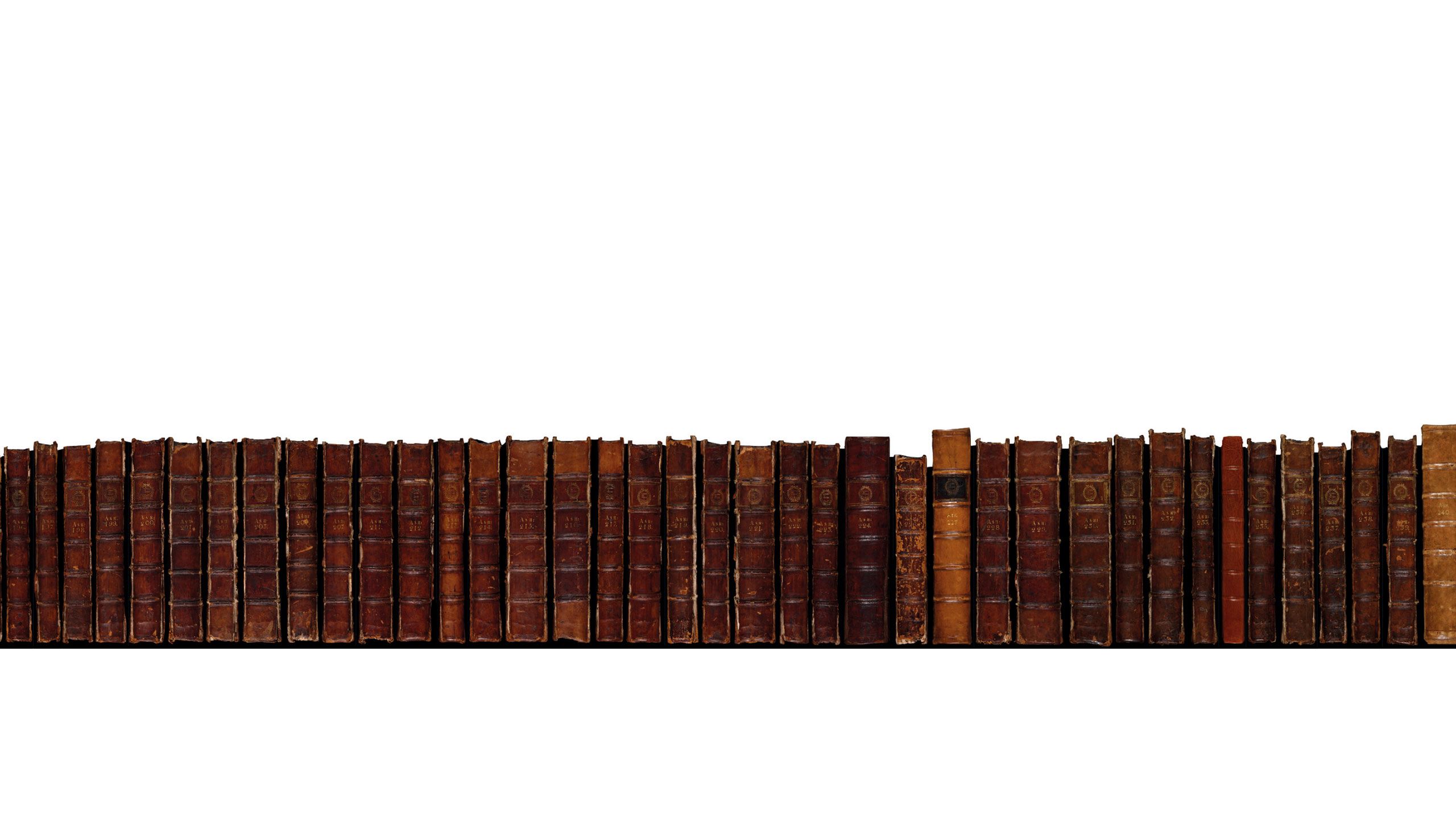
Watch Professor Lauren Kassell introduce the casebooks of Forman and Napier.
Simon Forman, an Oxford dropout familiar with the inside of several prisons, caught the plague when it swept London in 1592, but somehow managed to cure himself.
This brush with the reaper led to Forman's reinvention as a healer.
He entered the medical marketplace of Elizabethan England as an “irregular” – or unlicensed – practitioner, competing with back-street surgeons, apothecaries and elite physicians for the custom of the city’s diseased and distraught, who liked to shop around.
But Forman, a rake and master of occult arts, sold more than just soothing words or potions. His judgments were in tune with the cosmos. He divined knowledge from the positions of stars and planets to diagnose and prescribe for all manner of pain: from broken hearts to the bloody flux. His practice flourished.
Astrology was a serious healthcare option during much of the early modern period, says Professor Lauren Kassell, from Cambridge’s History and Philosophy of Science department. Physicians had studied the stars as part of their university training since the Middle Ages.
“It was understood that celestial movements influenced human lives and bodies through hidden beams, just as today we accept the moon affects tides,” says Kassell. “Astrologers like Forman understood how these forces worked.”
The zodiac was linked to parts of the anatomy, with treatments such as bloodletting considered most effective when the heavens aligned. A dose of clap or devastating smallpox outbreak could all be pinned on conjunctions of malevolent planets.
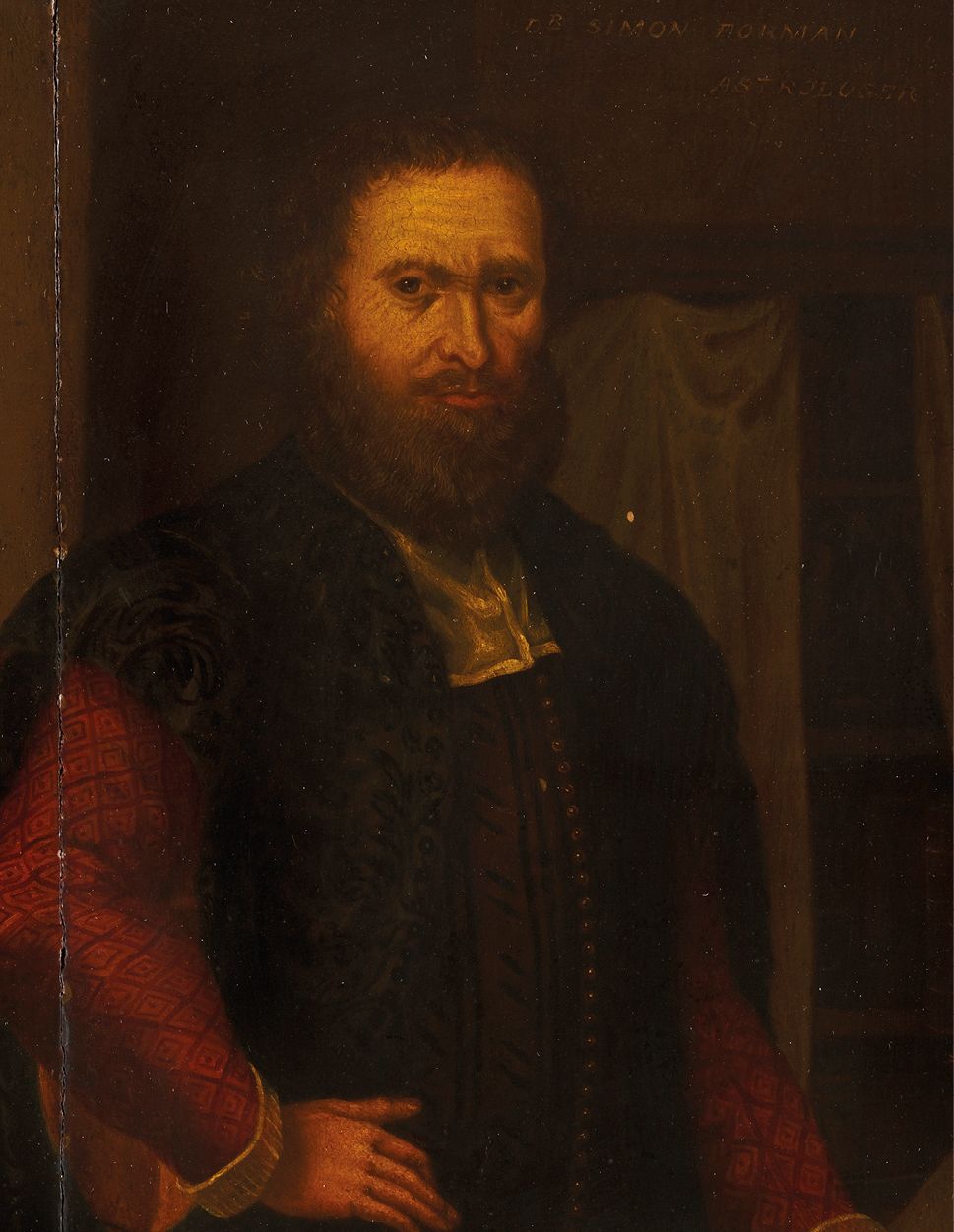
A man designated as Simon Forman, astrologer. Oil painting, ca. 1900. Credit: Wellcome Collection.
A man designated as Simon Forman, astrologer. Oil painting, ca. 1900. Credit: Wellcome Collection.
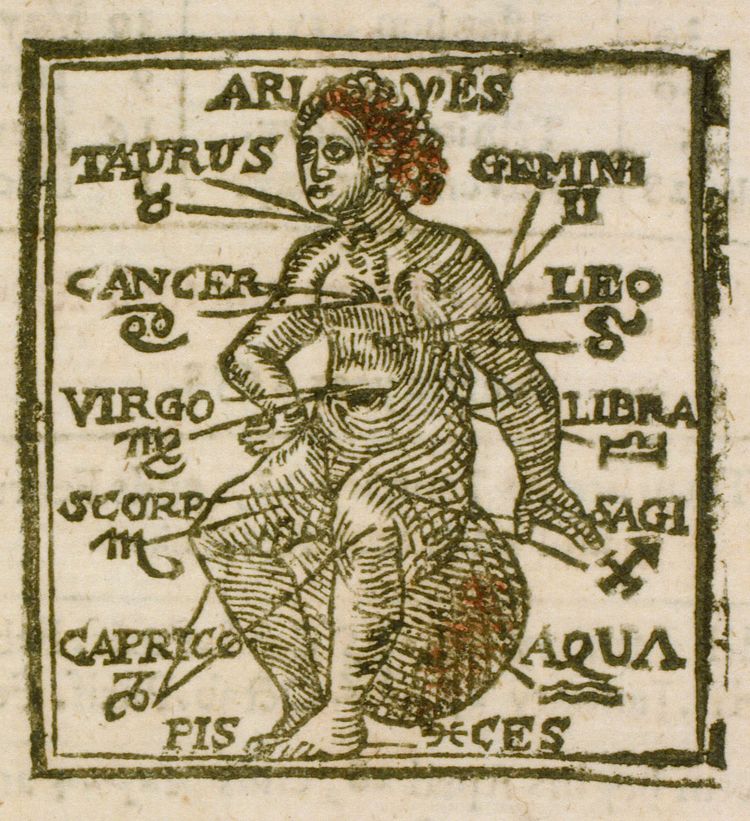
Detail from Allmanach auff das, Petrus Ovacius, 1581. Credit: Wellcome Collection.
Detail from Allmanach auff das, Petrus Ovacius, 1581. Credit: Wellcome Collection.
CASE21091
Alice Woodward of Stoke Hammond, 38 years. Thursday 19 April 1604, 12.45 pm.
[In chart] Proved with child. As I think quick.
Much pain in her back. The whites much. Right side & the back. Has her red ones. Has taken much grief for that she had 7 children at full time & yet born still all saving her first. Stomach sides back. A great looseness ever since Shrovetide. Turns now of late to be red. Fears the bloody flux. Never had a child on this ground where now she dwells but in Brickhill she had one. Fears the ground to be ill.
Takes her sometimes as if she dies in every place. Head legs arms. Had a child on Hallowtide but stillborn. Cannot quiet her mind because she has not the like fortune that other women have. Fears Alice Colman. Urine yellowish with white dregs.
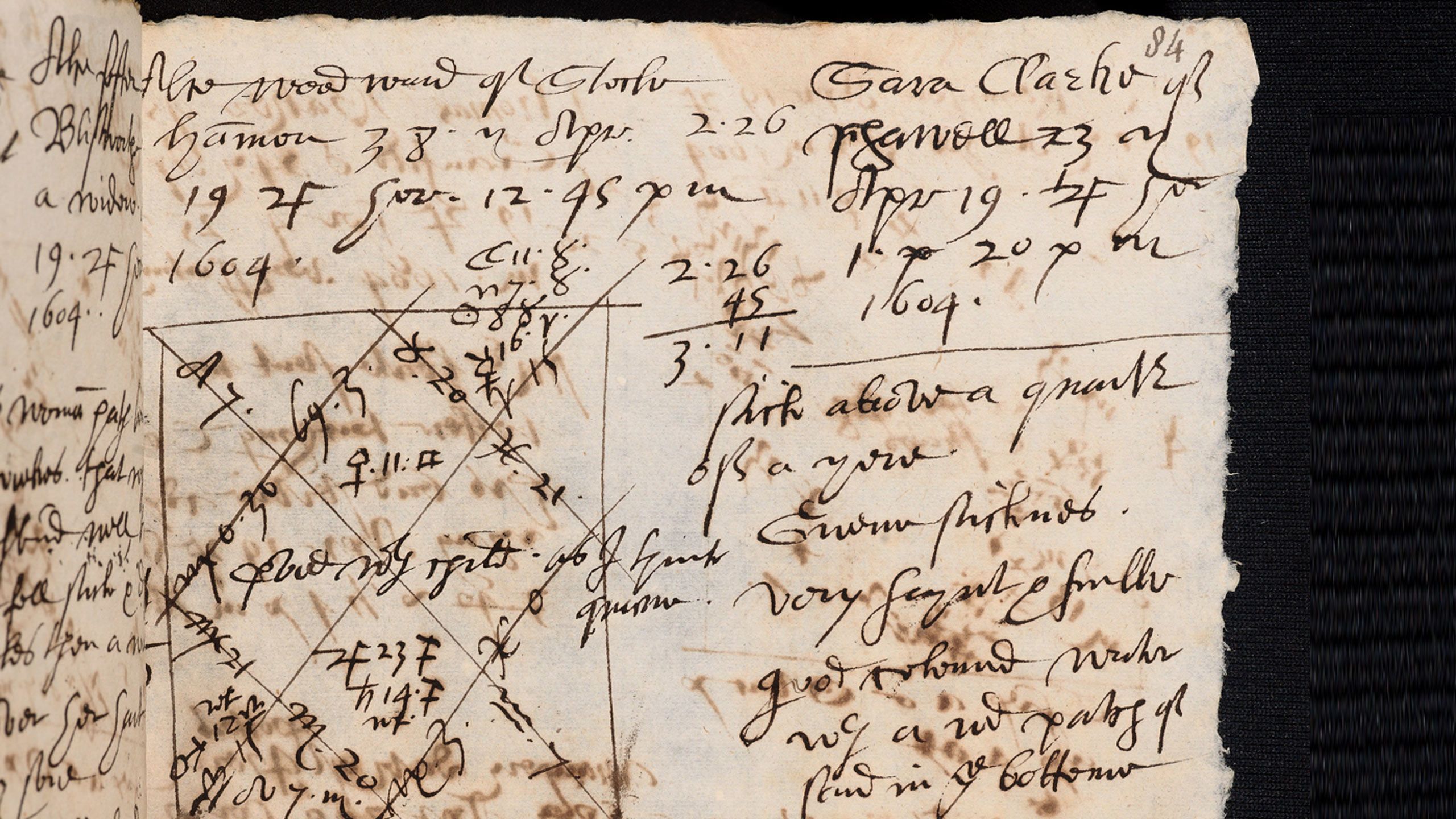
Forman and his protégé Richard Napier used horary astrology: casting astral charts for the point in time they received a new query, whether by client visit or messenger. Most people simply wanted to know “what’s my disease?” or “am I pregnant?”, and the astrologers – Kassell describes them as “cause specialists” – sought answers in the stars.
Working in the moment, quill in hand, they jotted copious notes during each of the dozen or so daily consultations: names, ages, times and locations, snippets of sickness and worry, sketches of stellar configurations, and remedy recommendations from purging elixirs to powdered skulls.
The notes were never intended for posterity, yet they survived. Six years of Forman’s, 1596 to 1603, and the full run of Napier’s from 1597 to his death in 1634. Around 65,000 individuals are covered in some 80,000 cases including repeat customers, amounting to one of the largest collections of private medical records in history.
Reams of cryptic script contain the painful, sordid and shocking details from the lives of cooksmaids, courtiers, merchants, wives and mistresses, cheaters and cuckolds, both Shakespeare’s landlady and his alleged ‘dark lady’, at least one archbishop, and the Duke of Buckingham’s lunatic brother.
The records of Forman and Napier spent centuries contained within sixty-six calf-bound volumes in Oxford’s Bodleian Library. Brave scholars ventured into the stacks of scribbles and symbols in search of the anxieties, afflictions and notable people of the age, but navigation was gruelling. Until now.
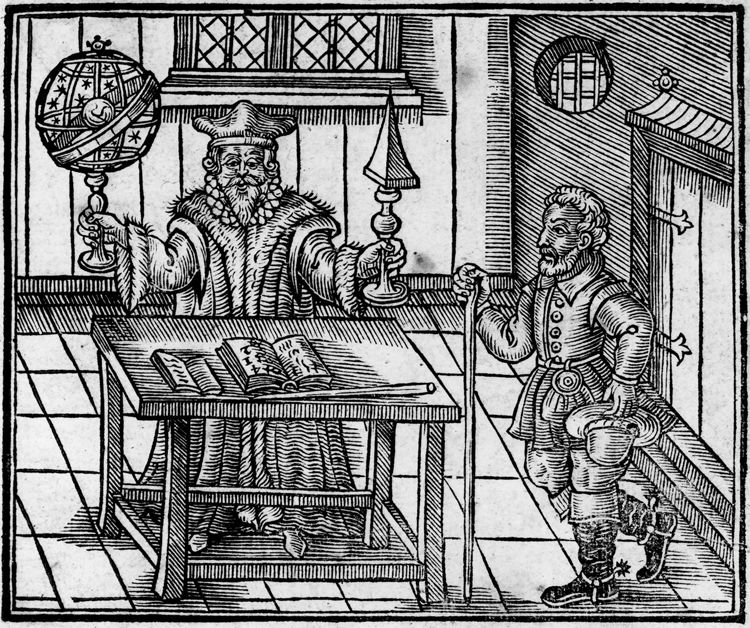
Astrologaster, or, The figure-caster. John Melton, 1620. Credit: Wellcome Collection.
Astrologaster, or, The figure-caster. John Melton, 1620. Credit: Wellcome Collection.
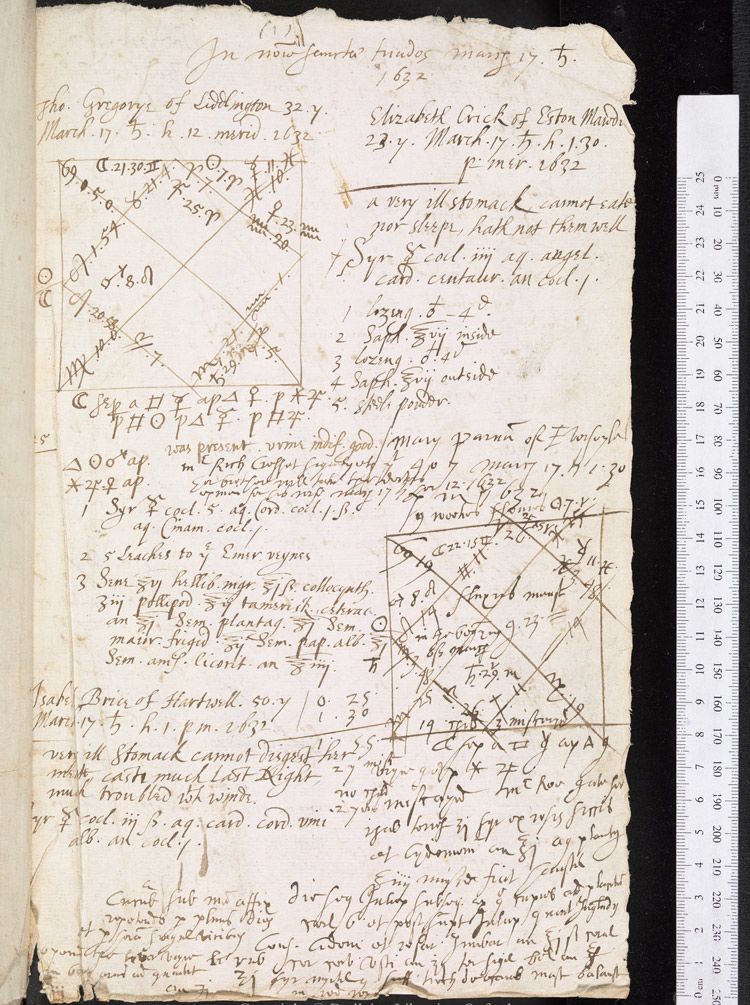
An example page from one of Richard Napier's casebooks, as digitised for the project. With thanks to Bodleian libraries, Oxford.
An example page from one of Richard Napier's casebooks, as digitised for the project. With thanks to Bodleian libraries, Oxford.
CASE18758
John Wilkingson of Olny, 28 years. Monday 5 January, 1601, 10.50am. A bachelor. Luem habet veneream [has venereal disease]. Concubuit cum uxore Woodmany of Olny unde usta uxor ussit maritum cocubuit [he lay with Woodmancy of Only’s wife, whence, burned, the wife burned her husband].
Vitiavit alterius coniugem [he violated another’s wife]. Had one of his stones cut off in a fight & fray. A filthy person. It is of Sun in Capricorn Moon separating from Mercury in Aquarius. Morbum gallicum habet [has the French disease]. Had a thrust with a rapier in his privy parts & cut the conduit of his bladder & voids blood like the bloody flux beneath. All his hair of his head is gone with the French disease. Pained in the head.
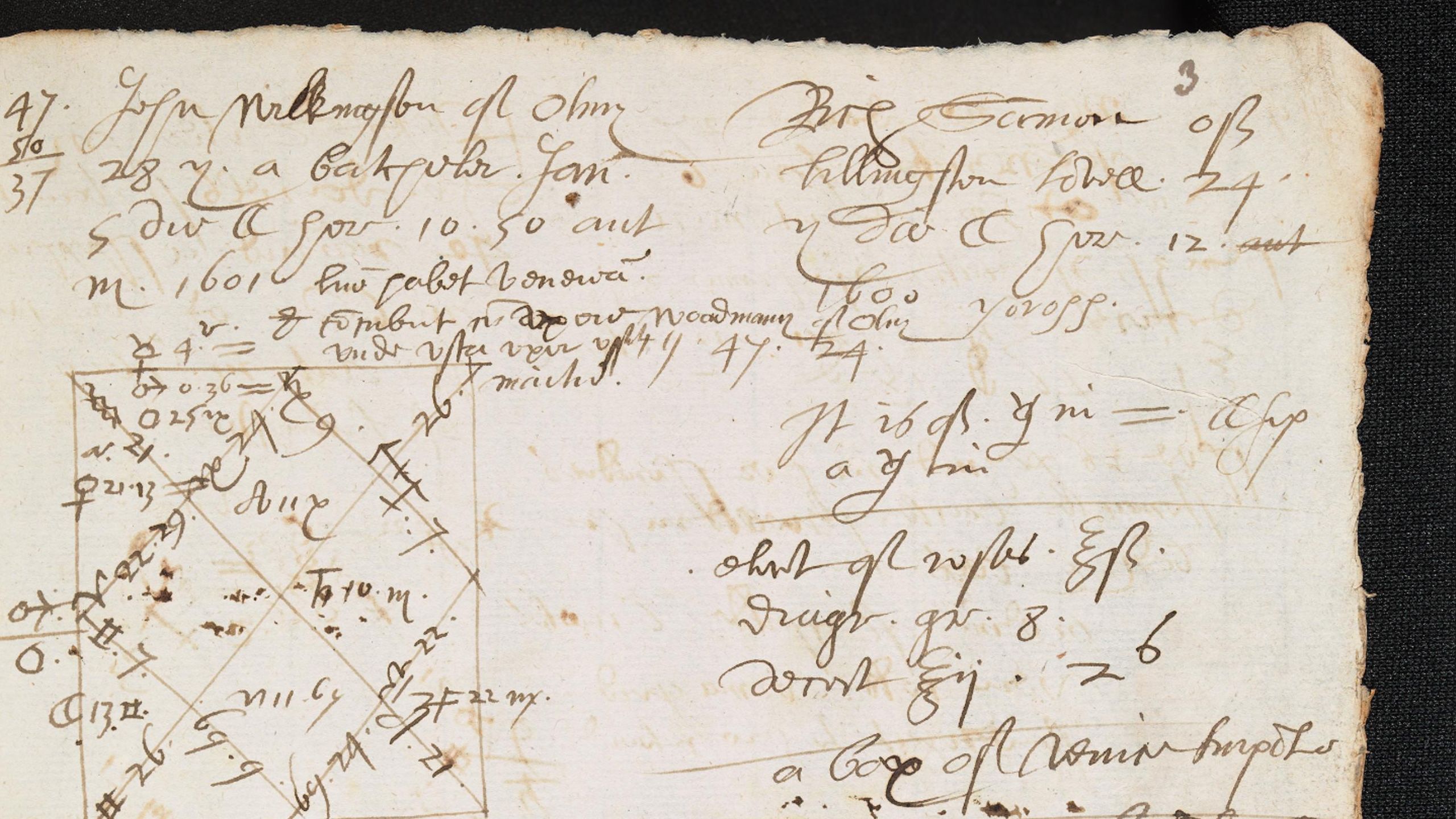
A decade in the making, the recently completed Casebooks Digital Edition, funded by the Wellcome Trust and supported by the Bodleian Library, is one of the most ambitious historical digitisation projects of recent years.
Professor Kassell and her team of Cambridge researchers – they call themselves the Casebooks Project – have sifted through, edited and rendered digital every page and every case held by these extraordinary 400-year-old legers. All are now fully searchable and publicly available online.
“The Casebooks Project opens a wormhole into the grubby and enigmatic world of seventeenth-century medicine, magic and the occult,” says Kassell. “Channeled through the astrologers’ pens are fragments of the health and fertility concerns, bewitchment fears and sexual desires from thousands of lives otherwise lost to history.”
“These unique archives are now accessible to everyone. The full corpus can be analysed from a vast range of perspectives – whether investigating early modern dialects, the phenomena of angelic visitations, or histories of delirium and depression.”
“The Project site also explores a day in the life of an astrologer, the rudiments of their medical methods, and the ingredients in their treatments. There’s even a name directory that reads like a seventeenth-century phone book.”
As well as the cases, the digital edition includes the astrologers’ diaries, featuring domestic details like the produce of an orchard or punishment of a servant, as well as musings on dreams – including one about impregnating the queen so her swollen belly keeps her skirt from the dirty street – and outlandish attempts to make the philosophers’ stone.
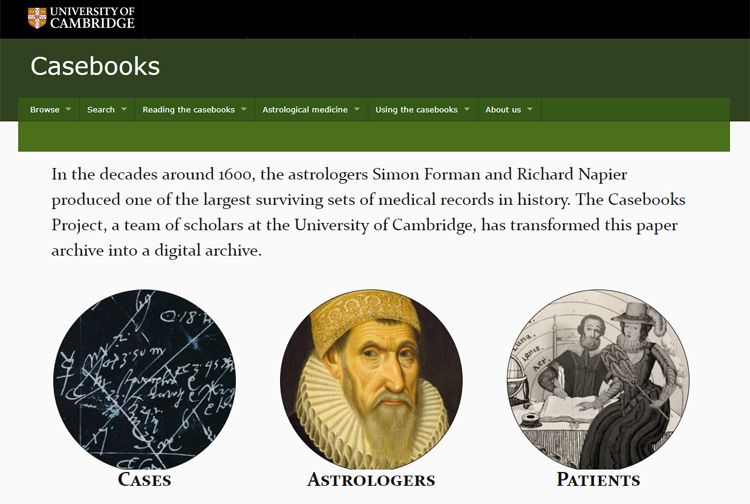
The homepage of the digital edition of the casebooks: https://casebooks.lib.cam.ac.uk/
The homepage of the digital edition of the casebooks: https://casebooks.lib.cam.ac.uk/
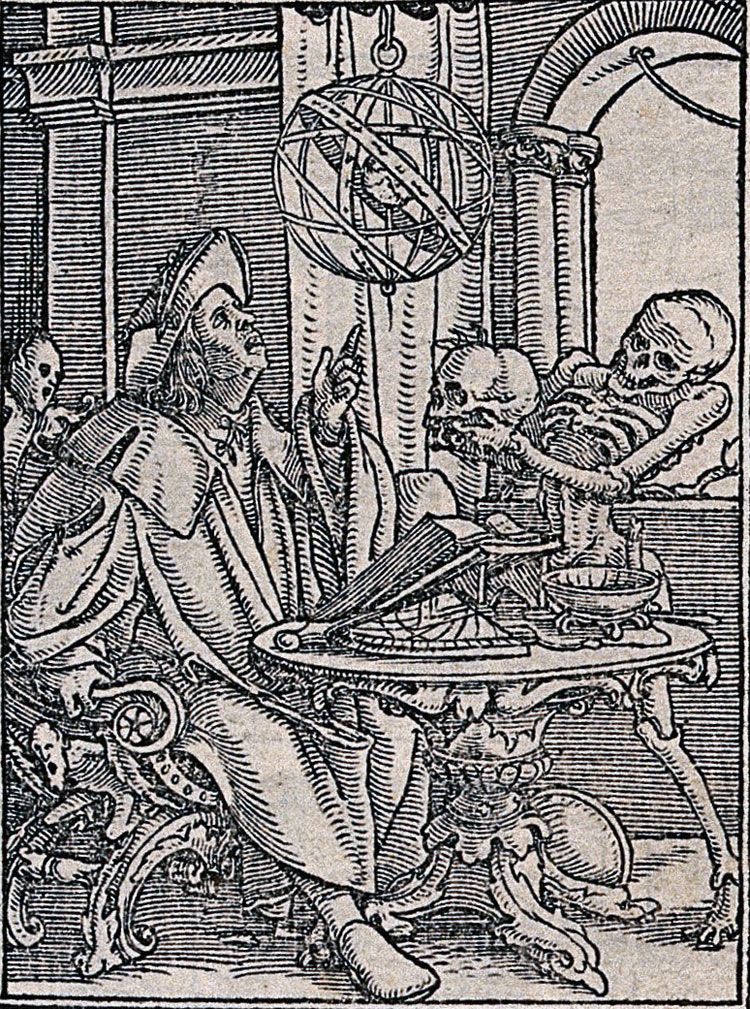
The dance of death: the astrologer. Woodcut by Hans Holbein the younger. Credit: Wellcome Collection.
The dance of death: the astrologer. Woodcut by Hans Holbein the younger. Credit: Wellcome Collection.
CASE45205
Eleanor Burge of Archester, 37 years. Monday 23 June 1617, 10.30 am. With consent. Was present. Very sensible.
[In chart] Much troubled in mind.
Has her terms very well. Ready to despair. 3 sons the youngest 4 years old. Has them very orderly. Head very light as if she had no brains. Had been amiss 3 weeks before on Lady Day in Lent. A very bad stomach. One said to her in her anger that she had the devil in her & since troubled in her mind. Cannot abide her child though she love it exceedingly for fear that she should kill her child. Afraid to have a knife in her hand least that she should either kill her self or her child or friend. Troubled with many wicked temptations very strongly as moving her to swear & to think that god objects against her. She thinks that she is unworthy to eat or drink. Else to do mercy to god herself or any body else.
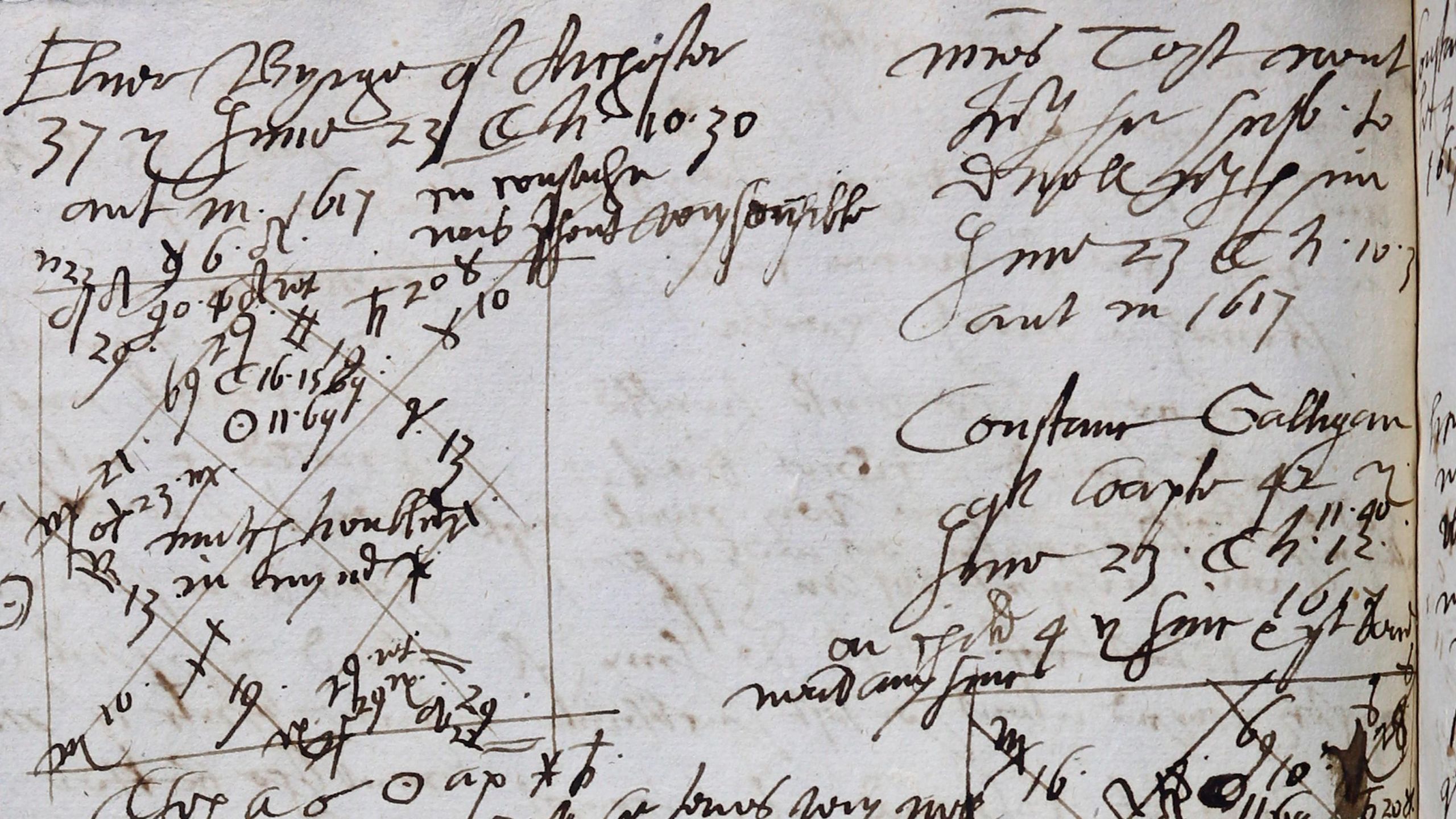
Napier produced the bulk of preserved cases, but “his penmanship was atrocious, his records were super messy” says Kassell. “Forman’s pages are more orderly but his writing strangely archaic, like he’d read too many medieval manuscripts. These notes were only meant to be understood by their authors.”
However, over years of editing, the researchers developed an intuition for deciphering the moods as well as meanings in this seemingly impenetrable scrawl.
To mark the conclusion of their work, the Casebook team have produced a collection of their 500 favourite cases.
Using taxonomies created for the overall project – from angels to animals, bad dreams to bad marriages – these cases are fully transcribed with standardised spelling and punctuation to render them readable for modern audiences.
“We encourage people to use our transcriptions as a taster, but they are just the tip of a massive iceberg,” says Kassell. “The main site has thousands of digital facsimiles, and the volumes can be leafed through page by page. Each one is a patchwork of diagrams and hastily written lists of personal details, ailments and remedies – all of which can now be searched by word or name.”
Searches yield all manner of peculiar treasure. E.g. Entering ‘sp*der’ negotiates inconsistent spelling (‘spider’; ‘spyder’) to find seven-year-old Henry Lane, whose blotchy limbs were thought to result from his eating a spider cut in half while spreading butter on bread. It also gives you Napier’s inexplicable note: “A spider crept nere unto me at my prayers I sought to kill it but it escaped.”
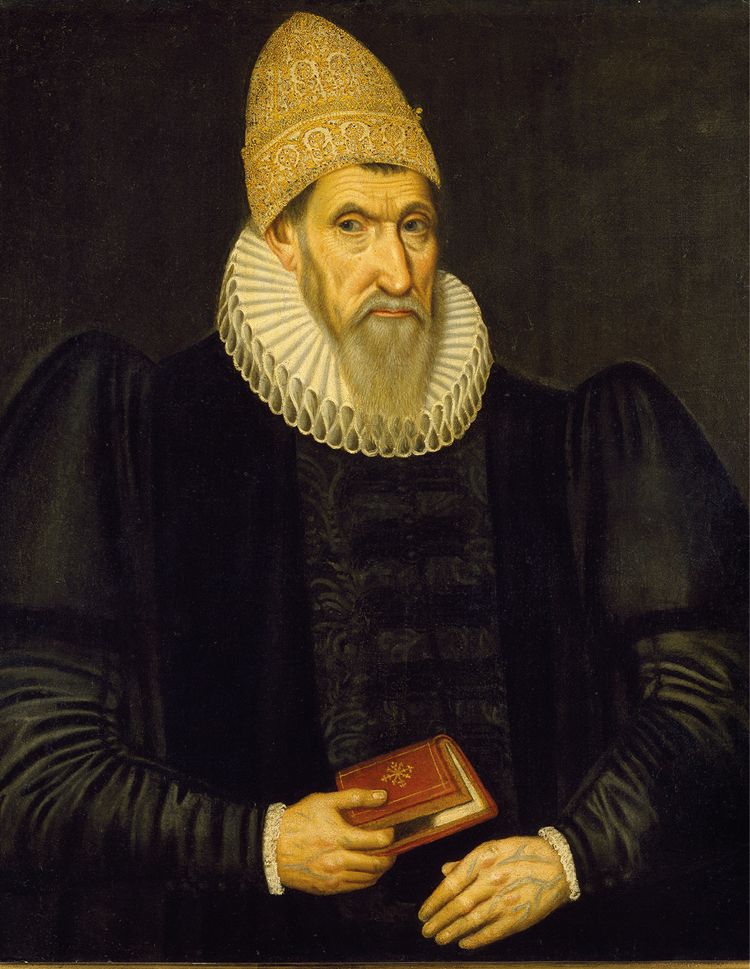
A portrait of Richard Napier by an unknown painter, c 1630. Oil on canvas, 76 × 64 cm. WA1898.19. © Ashmolean Museum, University of Oxford
A portrait of Richard Napier by an unknown painter, c 1630. Oil on canvas, 76 × 64 cm. WA1898.19. © Ashmolean Museum, University of Oxford
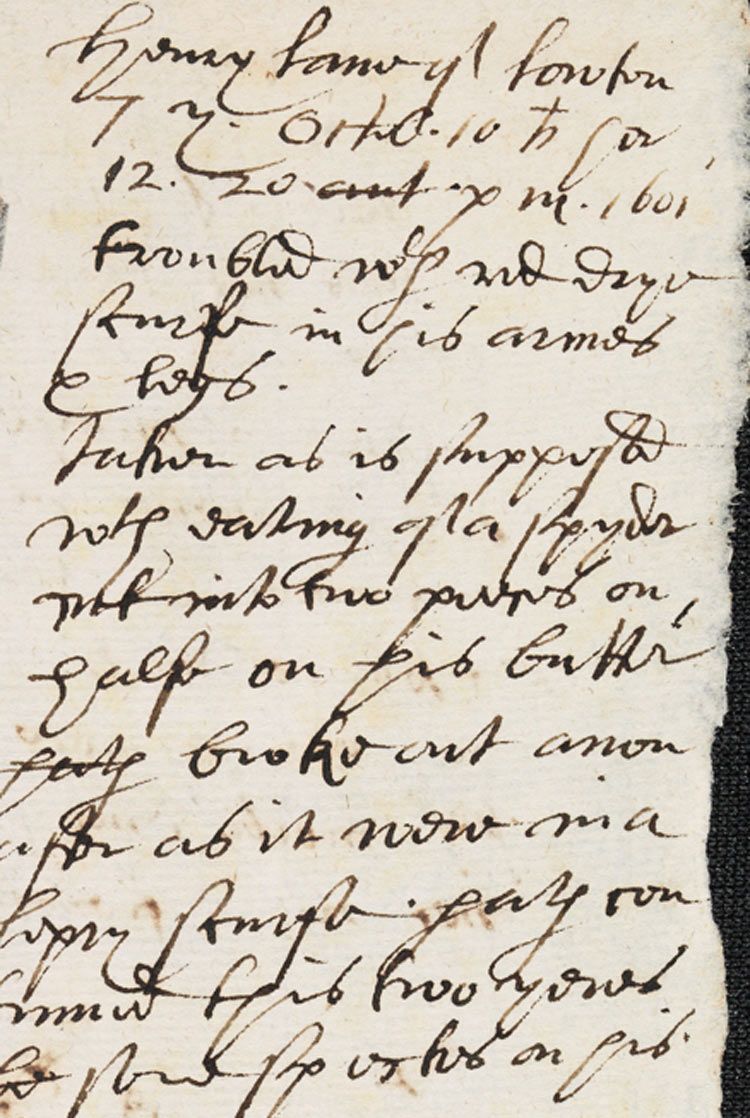
"Henry Lane of Lowten 7 y. Octob. 10 ♄ hor 12. 20 ant. p m. 160i troubled wth red drye scurfe in his armes & legs.taken as is supposed wth eating of a spyder cut into two peeces on halfe on his butter hath broke out anon after as it were in a lepry scurfe hath continued this two yeres be some speckes on his bodye."
"Henry Lane of Lowten 7 y. Octob. 10 ♄ hor 12. 20 ant. p m. 160i troubled wth red drye scurfe in his armes & legs.taken as is supposed wth eating of a spyder cut into two peeces on halfe on his butter hath broke out anon after as it were in a lepry scurfe hath continued this two yeres be some speckes on his bodye."
CASE2209
Charity Palmer alias Pottell the daughter of John [and] Elizabeth Standback, 28 years. Wednesday 3 August 1597, 9.30 am. Pro [for] Henry Sevedell of 30 years. The wife of Edmond Pottell.
Henry the son of Elizabeth and Edmond of St Martins by Ludgate. He dwells in Paternoster Row. She has loved this fellow this ten years and she cannot be quiet when she is out of his company. Her husband she shall bury him and she shall marry again. On the side of the belly & two in the clitch between the belly & the thigh
Colour & countenance
It seems he has dealt very friendly with her for money and else. And has known all parts of her body but has not carnally known her for he loathes a woman & cannot abide the smell of a woman, is sodomitical, secretly minded & very religious. Affair long & in love with another. He will never marry her. She had another husband and her master begot her with child & then married her to this base squire. Her first husband lived scant a year. This hath been married to her some year.
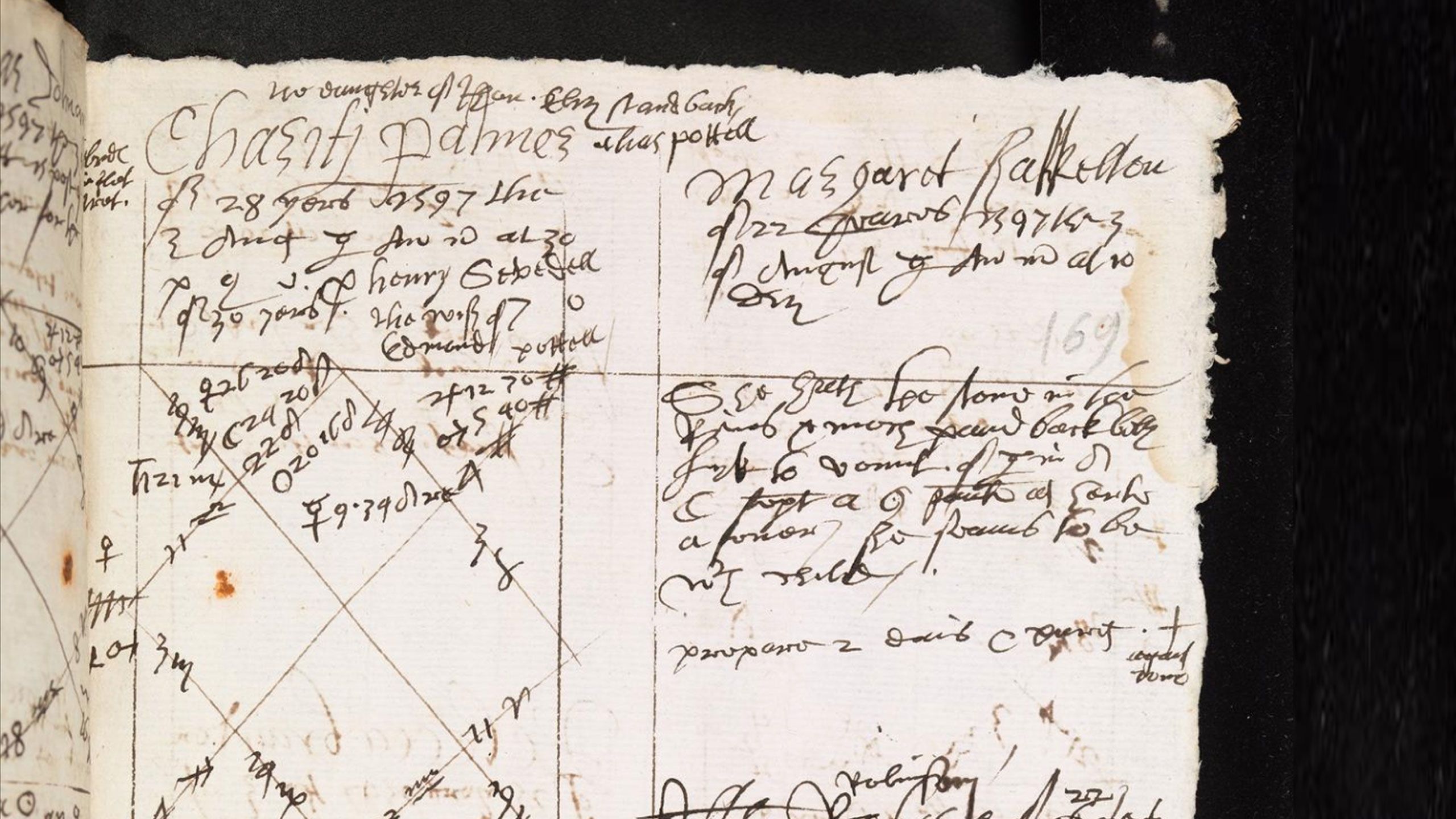
Women constitute over half the cases, and many talked openly about their sex lives and fertility fears, which Kassell believes fostered a sense of doctor-patient trust, with the astrologers’ approach working as a form of proto-therapy. “Just the opportunity to discuss your problem in detail may have been a big part of the appeal.”
This can be seen in consultations that open with standard complaints, but take unexpected turns. For example, while George Vescy’s wife is experiencing irregular periods, her main concern is revealed to be her husband’s desire “to have women whip him”, which she blames on the witchery of one “Goody Bigge of Nashe”.
Some of the queries – and querents – are disturbing. Women discuss abuse at the hands of their husbands, and clients could be in bad shape. Napier, who was also a devout parish rector, was particularly affected. The researchers became so attuned to Napier’s writing they noticed his pen trembled and shook when faced with troubling accounts or customers, such as “strang mad filthy creature” Anne Syred.
Case notes are obscure, often more list than narrative, and studded with astral emblems and references to “Sun in Capricorn” or being “tied to Jupiter”. Most cases come with a roughly drawn chart of the planetary positions at the time of enquiry, taken from an “ephemeris” – a table of astronomical calculation – and plotted onto the twelve celestial houses.
“Forman believed astrology alone gave him all he needed to diagnose and predict an outcome. His skill remained legendary decades after his death,” says Kassell. “Napier was more of a diagnostic pluralist, he used urine analysis – which Forman dismissed – and paid closer attention to details from his patients’ lives.”
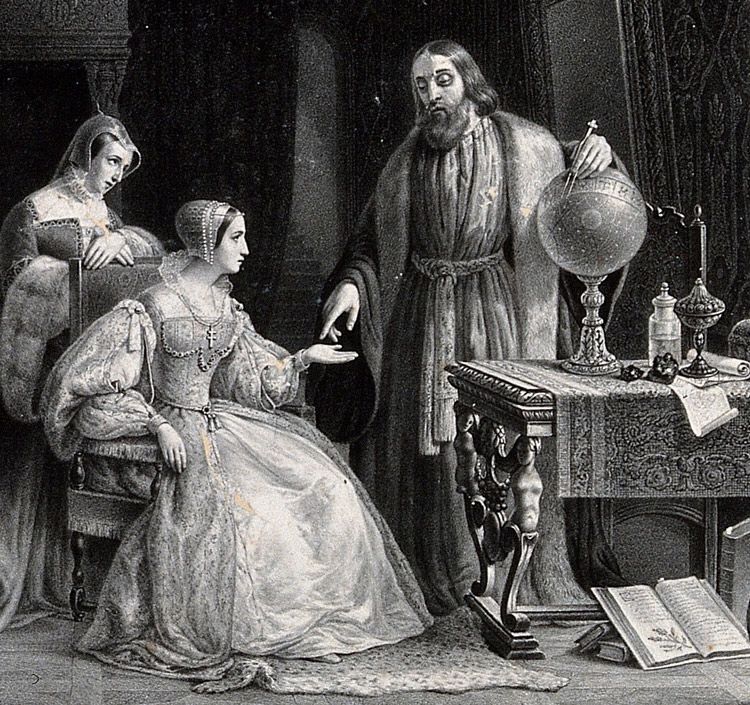
An astrologer telling a lady's fortune. Lithography by J. Prat after C.C. Renoux. Credit: Wellcome Collection.
An astrologer telling a lady's fortune. Lithography by J. Prat after C.C. Renoux. Credit: Wellcome Collection.
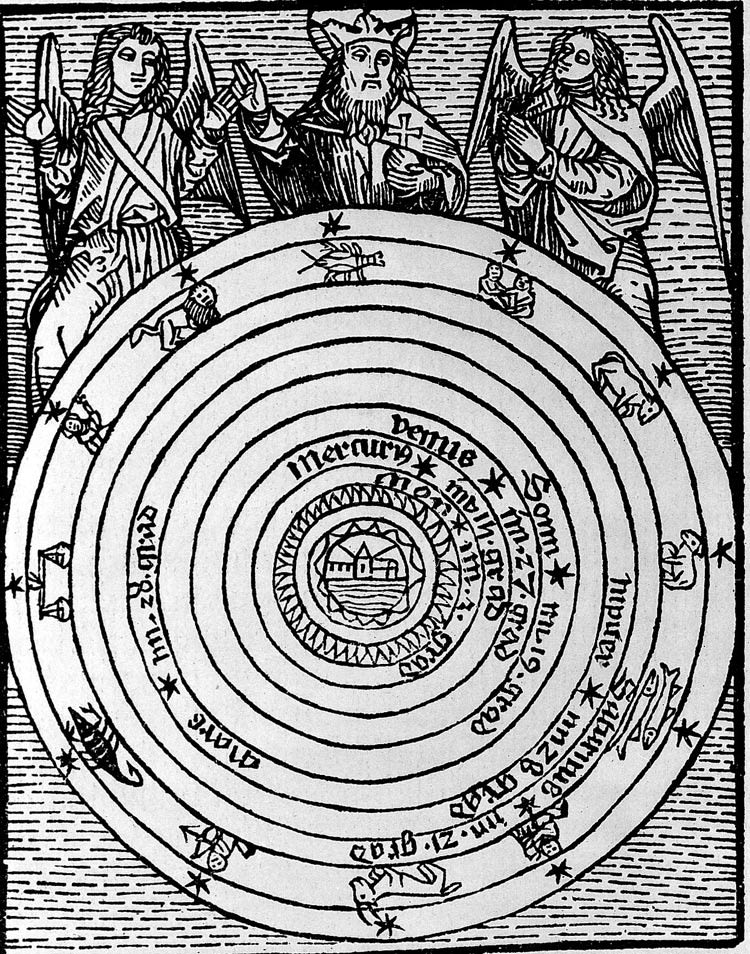
Woodcut: Syphilis: 1496 Credit: Wellcome Collection.
Woodcut: Syphilis: 1496 Credit: Wellcome Collection.
CASE56863
Edward Cleaver of Stoe of 9 churches, 50 years. 9 August 1623, 7.00 am. Was present.
Jane Parbery suspected who confessed that she had a puppy did suck her a twelvemonth since & better after he had said god be thanked for his food. An ill motion came into his mind saying ‘kisse myne arse’. & since daily tempted ever after his praying then an ill motion comes into his hart to say Sir head giddy & when he is over calling & praying to god then he is sorely tempted with profane & ungodly thoughts & sometimes with an inward smiling & laughing in his heart. [Treatment information, including vomiting lozenges, a purge, a pomander about his neck.] His motions in his seeming doe rise from his fundament upward. Urine very aguish.
Tempted with ill thoughts against god & a continually crying. Urine aguish. Continually praying & still tempted with profane & unreverent thoughts against god which do mightily torment him. Cannot rest nor follow any business. His ill motions do seem to arise from his fundament. Has had 2 vomiting lozenges, one purge & 4 a pomander. Was 7 times let blood in one year.
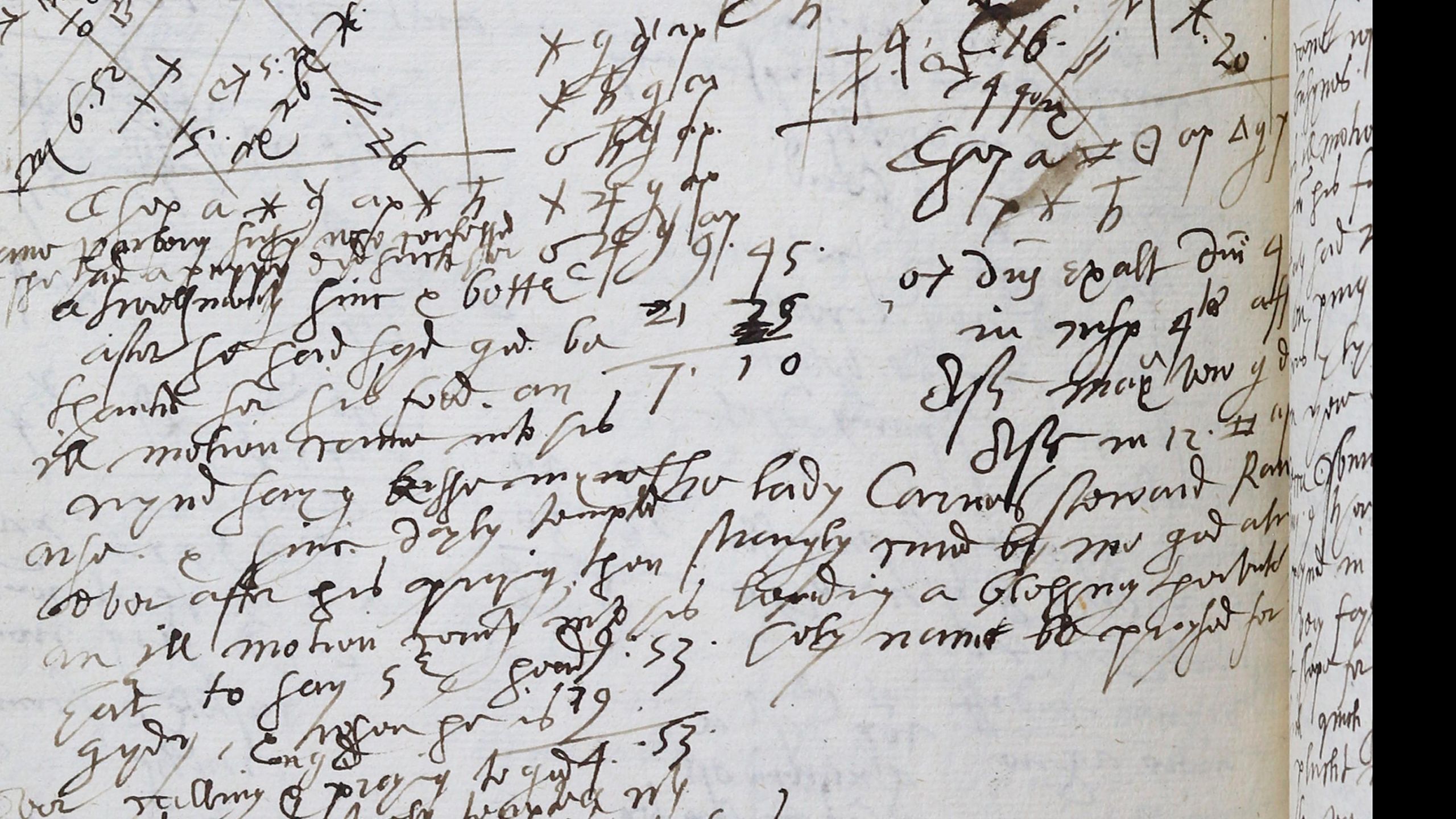
In the majority of cases, after recording a “judgement”, the astrologers noted a recommended treatment, and most of these consisted of purges, fortifying brews or bloodletting. Ill health was considered an imbalance in the body, corrected by expulsion of blood or bile. A purge was a “voiding”, either upwards or downwards, induced by a potent concoction of some kind.
The casebooks feature more putrid remedies, including pigeon slippers (“a pigon slitt & applied to the sole of each foote”) and the touch of a dead man’s hand. Napier was a connoisseur of leeches, preferring “Dorchester…but beakinsfild better”; he also, on occasion, sought second opinions from angels, who offered blunt diagnoses such as “he will die shortly”.
Harmful or suicidal thoughts were often considered to be demonic visitations, and the astrologers sold “counter-spells” of incantations, sigils or blessed amulets. Unusual illnesses and bad luck with livestock led thousands of clients to voice suspicions about witchcraft; “the evil eye is in play throughout the casebooks," says Kassell.
Simon Forman was loathed by London's College of Physicians, who accused him of quackery, repeatedly fined him, and tried to shut him down – even after he secured a license to practice medicine from the University of Cambridge.
Nevertheless, Forman remained a hugely popular medical practitioner, one who combined his instinct for healing and self-promotion with a fascination for the power of the stars and nefarious arts, remaking himself as the magus of Lambeth.
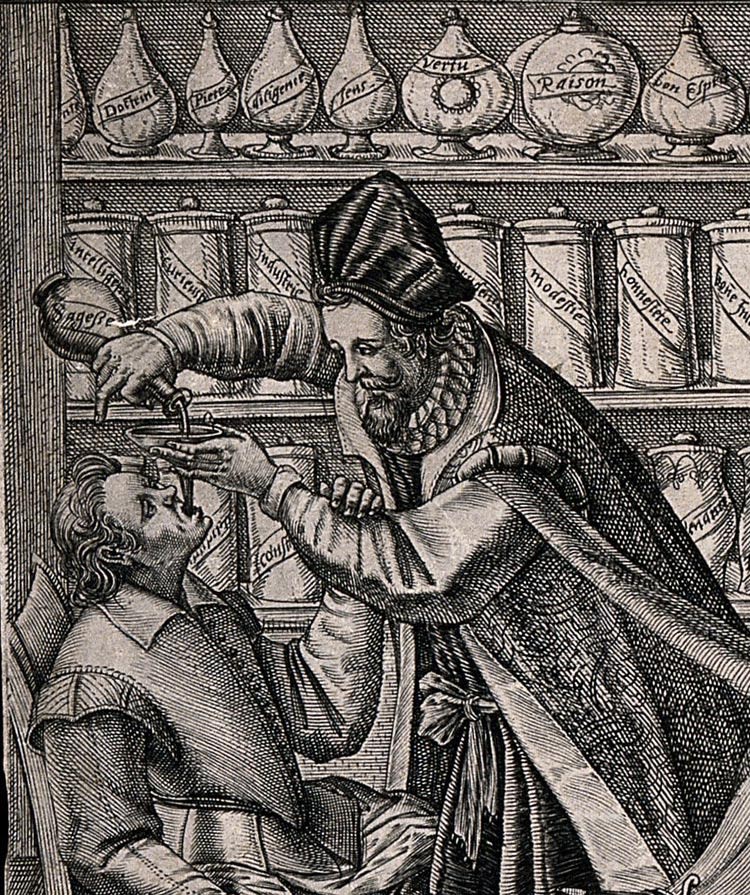
Detail from a line engraving by M. Greuter, c. 1600. Credit: Wellcome Collections.
Detail from a line engraving by M. Greuter, c. 1600. Credit: Wellcome Collections.
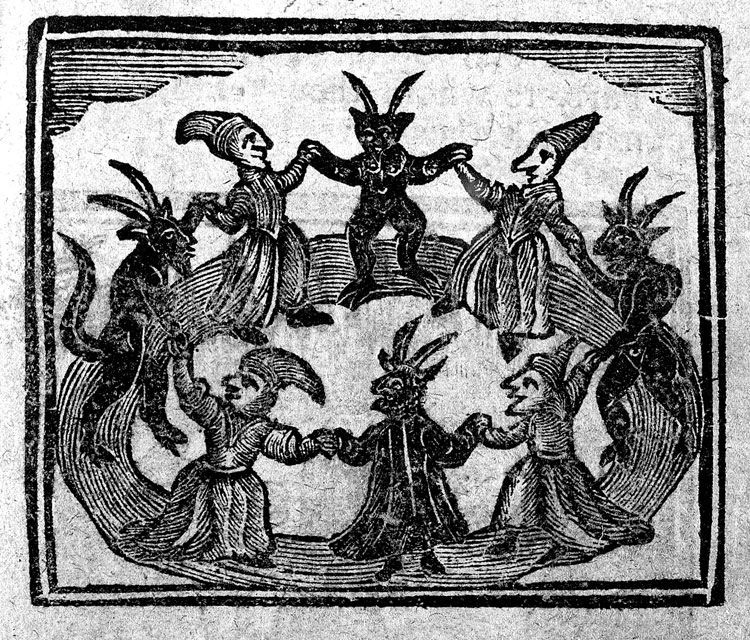
Woodcut from the History of Witches and Wizards, 1720. Credit: Wellcome Collection.
Woodcut from the History of Witches and Wizards, 1720. Credit: Wellcome Collection.
CASE53754
Ralph Winterton, fellow of King’s College. Sunday 24 March 1622, 5.20 pm.
A rare young man for learning, studiousness & strictness of life. Mopish, melancholic, fell ill by overmuch study & that a knight entraining him to ride to his home & year promising him 30l per annum put him no man can yet learn the cause after a quarter of a year. His father sent for him. 23 years August 26, 3.30 pm.
[In chart] Mopish. Went to drown himself. Miraculously preserved.
He assayed to drown himself the Friday sennet before Candlemas day last but was miraculously preserved. Deep melancholy. Has taken much physic. Never the better.
Sometimes he calls upon God & trusts in Christ’s mercy, other times says that he is born the child of perdition.
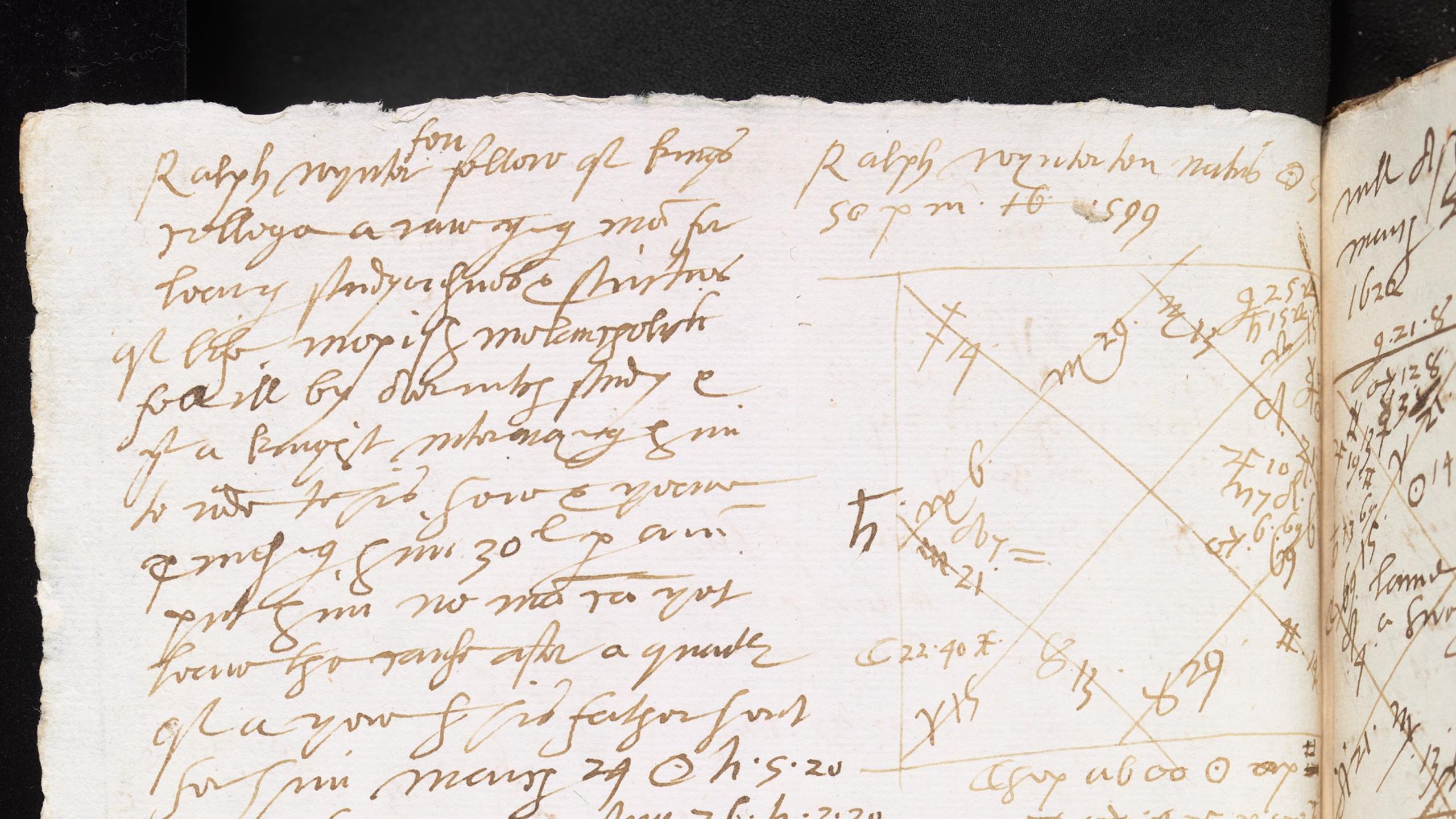
Kassell recently worked with Jennifer Schneidereit from independent games developer Nyamyam to help devise a video game of his life. In Astrologaster, the player inhabits Forman as he consults patients inspired by real cases, from baronesses to sea captains, in the hope of gaining approval from the medical establishment of the day – something the real man was denied.
Kassell has studied Forman for twenty years. She describes him as a “tireless narcissist” who routinely seduced patients, and was almost always in pursuit of sex or magic. “Forman was a complicated and unpleasant man. We had to create a coding category for stalking, as he frequently asked the stars to help him track down the women he was hounding.”
His casebooks, and those of Napier, continue to suck historians in. But any insights into early modern lives remain partly obscured by the astrologers’ idiosyncratic record-keeping, awful writing and strange mix of philosophies. In fact, the Cambridge researchers sometimes convene ‘Casebooks Therapy’ sessions to compare code-breaking notes.
“The casebooks are all about questions. The astrologer asked questions, then prompted his clients to ask questions. The resulting mass of documents destabilises our grasp of medical encounters, encouraging us to ask our own questions about how these practices have varied throughout history,” says Kassell.
“The Casebooks Digital Edition has thrown wide open the potential of Forman’s and Napier’s records, allowing future generations of scholars to tumble down this rabbit hole of magic and medicine in previously impossible ways. Be warned, however: the deeper in you burrow, the more questions you will have.”

Simon Forman. Line engraving, 1793. Credit: Wellcome Collection.
Simon Forman. Line engraving, 1793. Credit: Wellcome Collection.
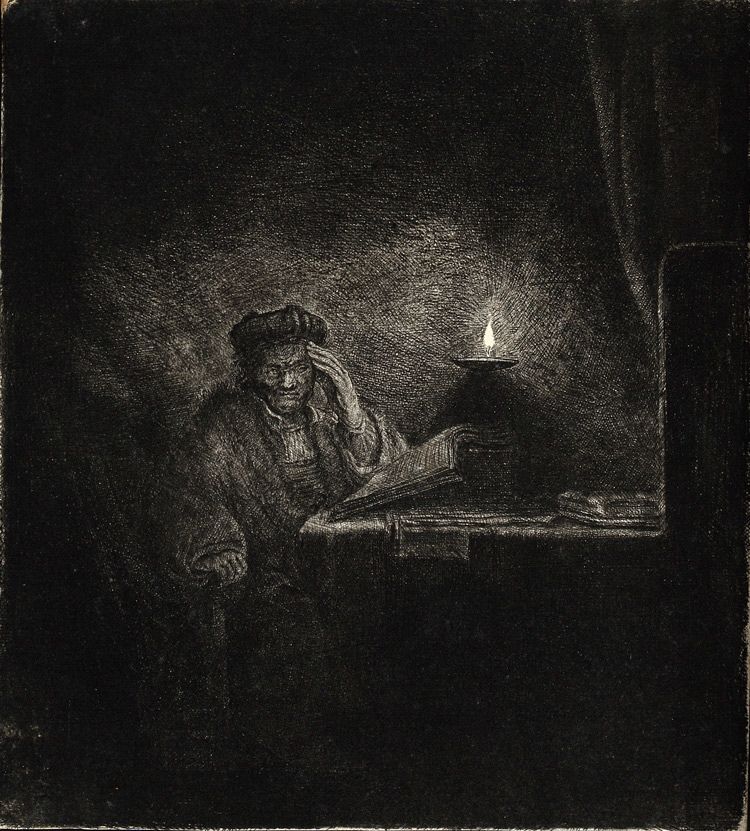
An astrologer wearing spectacles sits in his study reading by a globe. Line engraving by G.L. Heitel after J.J. Vliet, 1634. Credit: Wellcome Collection
An astrologer wearing spectacles sits in his study reading by a globe. Line engraving by G.L. Heitel after J.J. Vliet, 1634. Credit: Wellcome Collection
